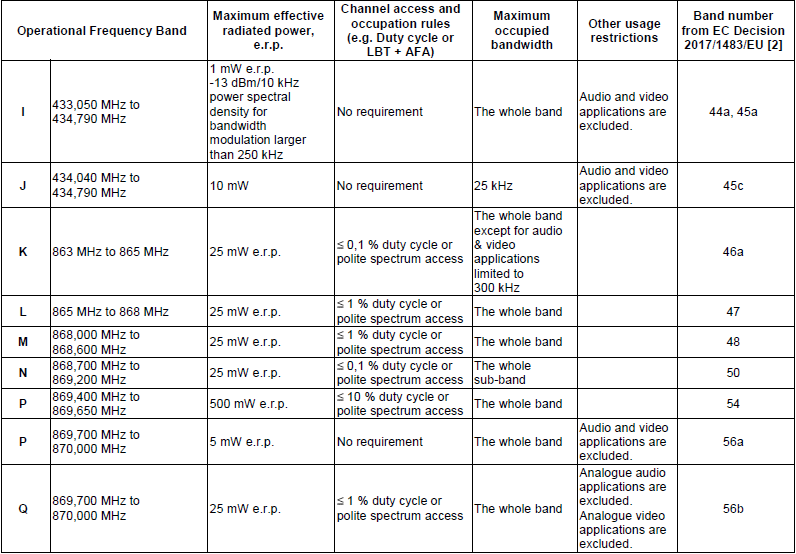Hello,
the ETSI EN 300 220 standard specifies the sub bands K, L, M, N, P and Q in the 863 MHz to 870 MHz range. If I split each sub band into a specific number of 100 kHz bandwidth channels, and employ slow frequency hopping (i.e. each packet on a different channel) respecting the duty cycle requirements of the whole sub-band, would I have to declare my equipment as FHSS equipment and meet the limits specified in ETSI EN 300 220-2 - section 4.3.10 (FHSS equipment)? Or is it possible to declare my system just as a duty cycle system?


